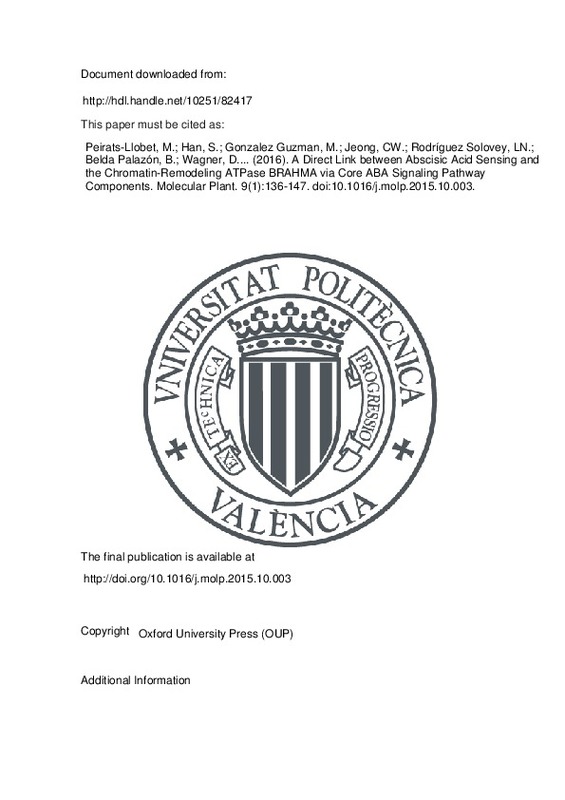JavaScript is disabled for your browser. Some features of this site may not work without it.
Buscar en RiuNet
Listar
Mi cuenta
Estadísticas
Ayuda RiuNet
Admin. UPV
A Direct Link between Abscisic Acid Sensing and the Chromatin-Remodeling ATPase BRAHMA via Core ABA Signaling Pathway Components
Mostrar el registro completo del ítem
Peirats-Llobet, M.; Han, S.; González Guzmán, M.; Jeong, CW.; Rodríguez Solovey, LN.; Belda Palazón, B.; Wagner, D.... (2016). A Direct Link between Abscisic Acid Sensing and the Chromatin-Remodeling ATPase BRAHMA via Core ABA Signaling Pathway Components. Molecular Plant. 9(1):136-147. https://doi.org/10.1016/j.molp.2015.10.003
Por favor, use este identificador para citar o enlazar este ítem: http://hdl.handle.net/10251/82417
Ficheros en el ítem
Metadatos del ítem
| Título: | A Direct Link between Abscisic Acid Sensing and the Chromatin-Remodeling ATPase BRAHMA via Core ABA Signaling Pathway Components | |
| Autor: | Peirats-Llobet, Marta Han, Soon-Ki González Guzmán, Miguel Jeong, Cheol Woong Rodríguez Solovey, Leisa Natacha Wagner, Doris | |
| Entidad UPV: |
|
|
| Fecha difusión: |
|
|
| Resumen: |
[EN] Optimal response to drought is critical for plant survival and will affect biodiversity and crop performance during climate change. Mitotically heritable epigenetic or dynamic chromatin state changes have been implicated ...[+]
|
|
| Palabras clave: |
|
|
| Derechos de uso: | Reserva de todos los derechos | |
| Fuente: |
|
|
| DOI: |
|
|
| Editorial: |
|
|
| Versión del editor: | http://doi.org/10.1016/j.molp.2015.10.003 | |
| Código del Proyecto: |
|
|
| Agradecimientos: |
Work in Dr. Rodriguez's laboratory was supported by the Ministerio de Ciencia e Innovacion, Fondo Europeo de Desarrollo Regional and Consejo Superior de Investigaciones Cientificas (grant BIO2014-52537-R). M.P.-L. and L.R. ...[+]
|
|
| Tipo: |
|







![[Cerrado]](/themes/UPV/images/candado.png)


